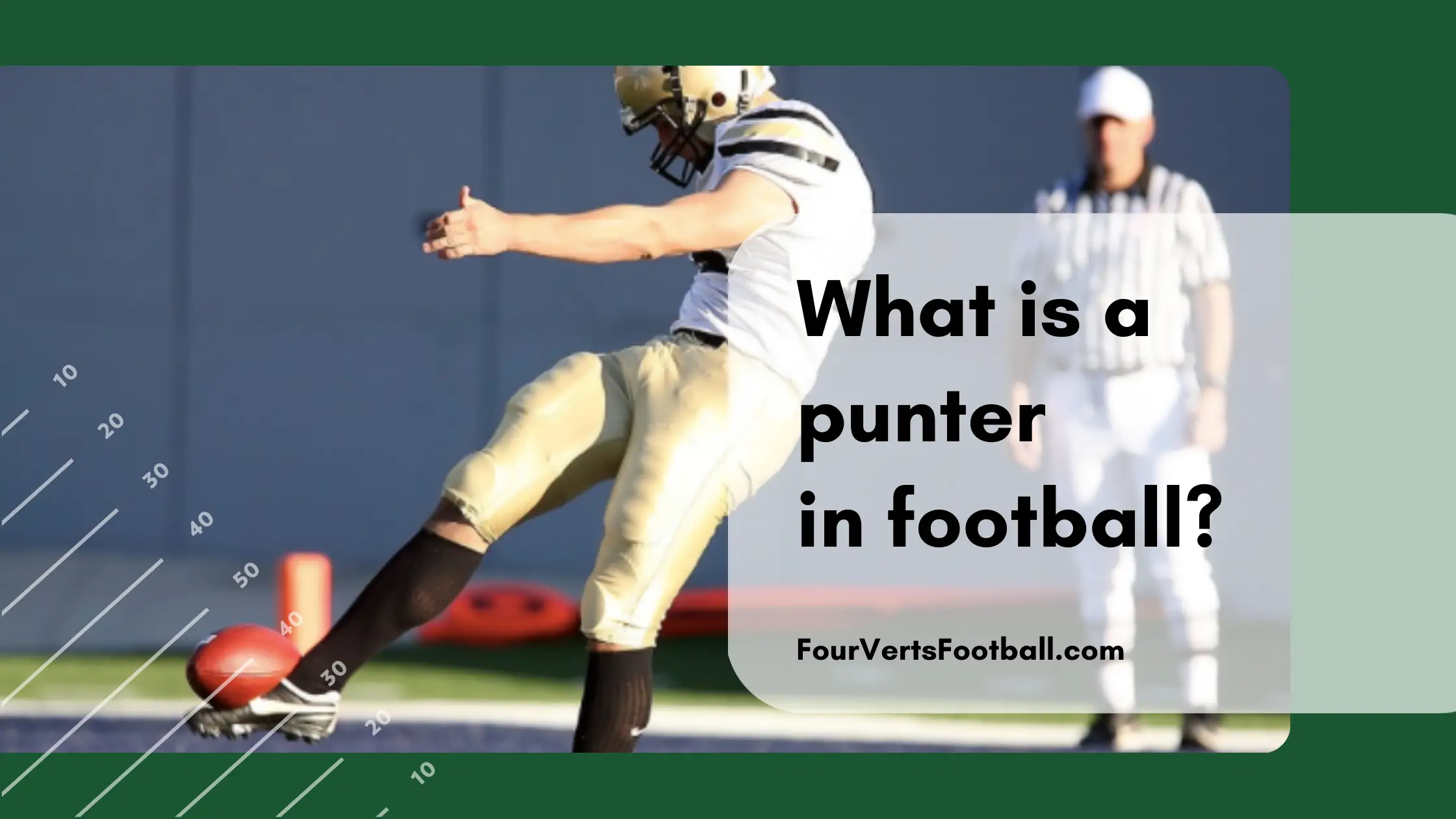A punter in football is a special teams position that dropkicks the ball in order to a more difficult position on the field. Punters are only used a few times a game but their few plays can have a large impact.
Responsibilties
Punting
Punting is of course the most important aspect of a punters job. A punt occurs when a team faces a fourth down. If they fail to convert the fourth down the opposing team will get the ball at their location.
To give the opposing team field position further away from your endzone you may elect to punt the ball. When punting the ball the opposing team will start their drive from where the punt went out of bounds or where the punt returner was tackled.
The punter is the player responsible for punting the ball down the field. This will happen several times a game and has great effects on the field position of the opposing team.
Holding
Holding is another task on the football field that is often done by punters. On a field goal attempt, one player is the holder. They will kneel down, catch the snap and hold the ball up so the kicker may kick it.
This role is usually done by the backup quarterback or the punter. This is an incredibly important role to play as a botched snapped as a holder can be incredibly costly for your team.
Punter Attributes
Leg Strength
Leg strength is a very important factor in punting. In order to make it as a punter in the NFL leg strength is mandatory. The stronger your leg the further the punts will travel. Distance is one of the most important aspects of punting.
The further the ball travels the further the opposing team will start from your goal line.
Accuracy
Another important factor in punting is accuracy. When a punt travels into the opponent’s endzone it is ruled a touchback. This means the team will start from their twenty-yard line.
In order to pin them even closer to their own endzone the punter will try and aim his punt. If the returner is tackled or a punt goes out of bounds within the twenty-yard line, this is considered a successful punt.
On succesful punts you may notice Pat Mcafee tweeting “for the brand” on twitter. This has become a running joke in reference to Mcafees professional punting career.
Speed/Throwing
Though not a very important attribute speed and throwing ability can be helpful for a punter. Often times on fake punts the punter is tasked with throwing the ball or running it himself.
To have these attributes as a punter is an added bonus that most punters do not possess.
Positioning
On a punt, the punter will stand about ten or so yards back from the line of scrimmage. The punter will be in the middle of the formation and will typically be the only player in the backfield.
Though on some occasions punters will have personal protectors in the backfield with them as well.
Build
The build of a punter is not a big factor of the position. Unlike defensive tackle or guard, there is no required build that helps punters at the position.
Though most punters tend to have longer legs and fairly large leg muscles. The majority of punters are taller and do not tend to carry much body fat.
Concluding Thoughts
We hope you enjoyed this guide to understanding the punter position in football. If you have any questions regarding this position please be sure to reach out in the comments below.


I just was wondering if a punter ob fourth down, punts the ball, and happens to make the ball through the goal posts, is that considered points???